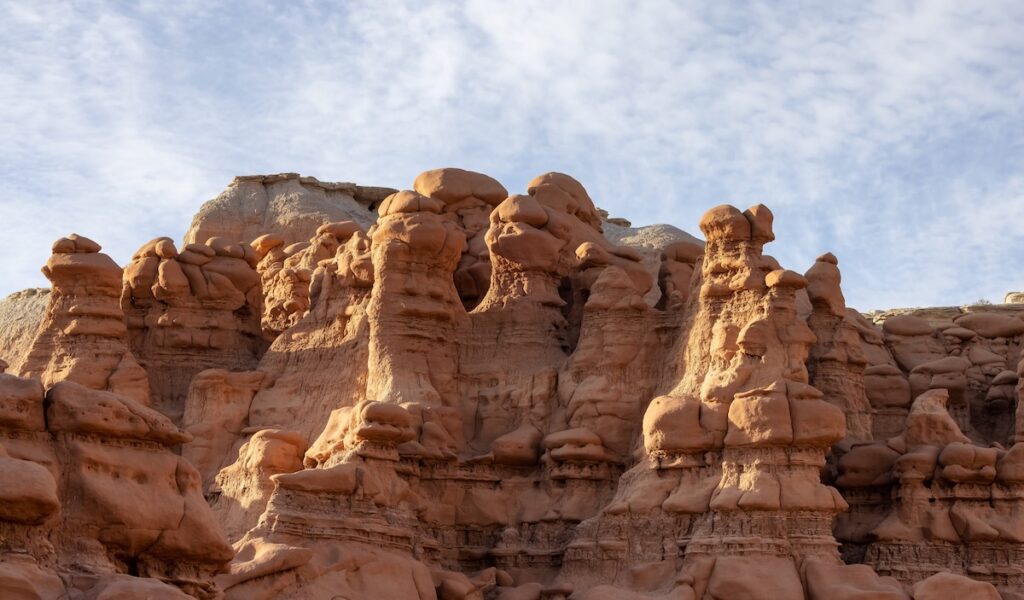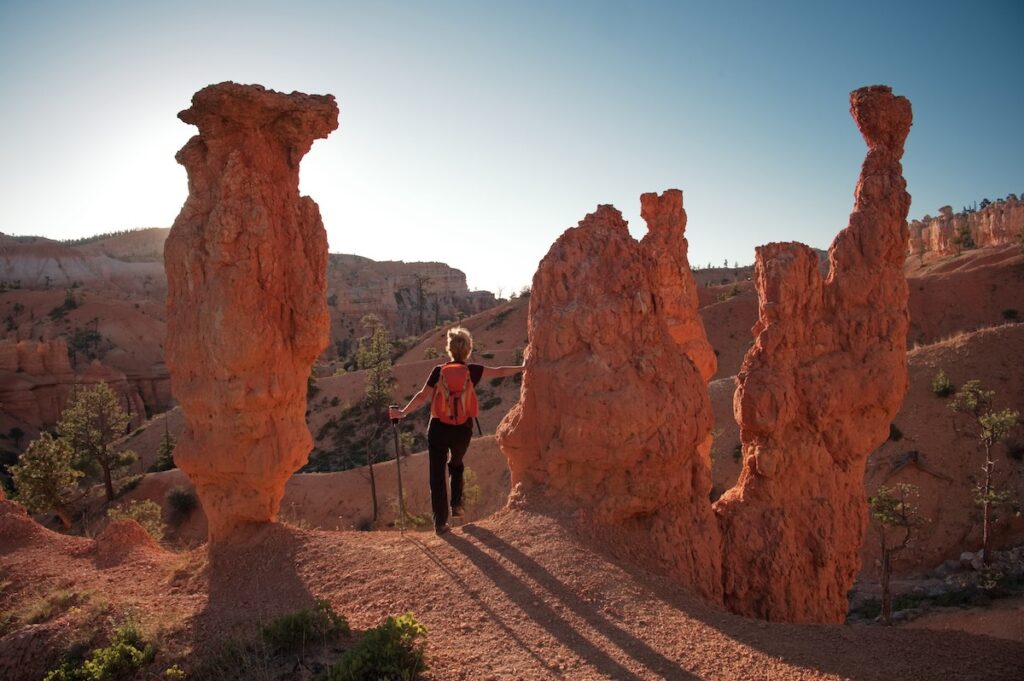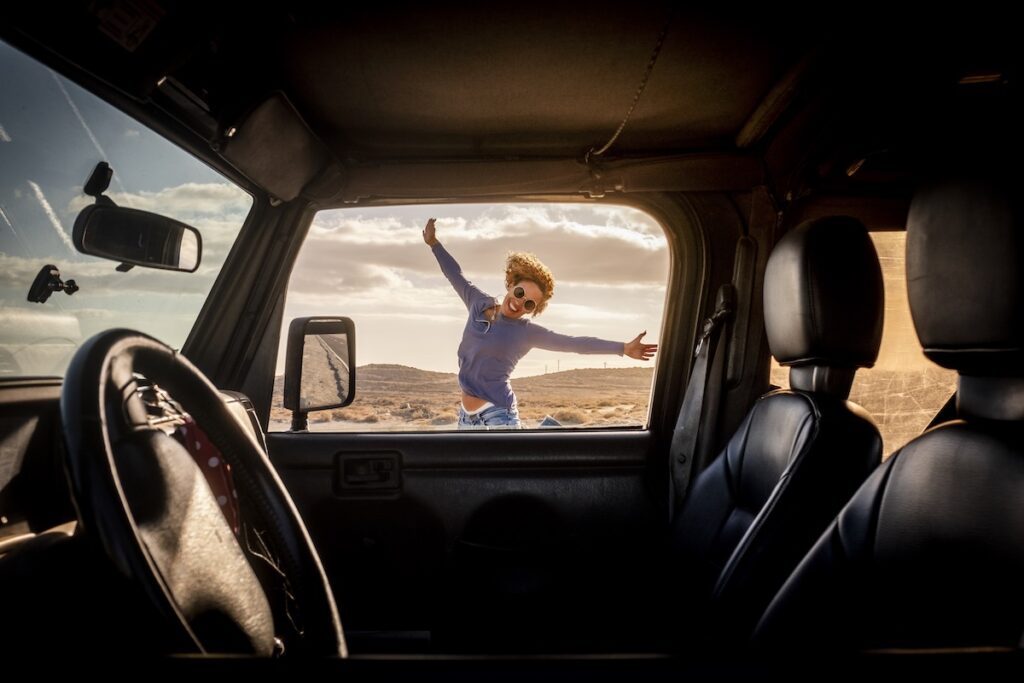Introduction: Unveiling the Mysteries of Southern Utah’s Hoodoos
If you’re planning a trip to Southern Utah, you’re likely to stumble upon one of the region’s most captivating natural wonders: the hoodoos. These unique, thin spires of rock, often resembling giant mushrooms or chimneys, are a hallmark of Utah’s breathtaking landscapes.
The Toadstool Hoodoos, located within the Grand Staircase-Escalante National Monument, are a prime example of these natural sculptures. Situated off Highway 89, about 45 miles east of Kanab, Utah, and roughly 30 minutes northwest of Page, Arizona, these hoodoos offer an enchanting escape into nature’s artistry.
Imagine walking through a desert landscape dotted with vibrant red, orange, and white rock formations, surrounded by the expansive skies of Southern Utah. The Toadstool Hoodoos trail, a short and family-friendly hike, allows you to get up close and personal with these geological marvels.
This 1.8-mile round-trip hike is easy to navigate and offers stunning views, making it an ideal stop for anyone exploring the region’s natural attractions, whether you’re heading to Bryce Canyon National Park, Zion National Park, or other nearby wonders.
The allure of the hoodoos lies not only in their surreal beauty but also in the solitude and tranquility they offer. Unlike some of the more crowded national parks, the Toadstool Hoodoos often provide a peaceful and almost exclusive experience, allowing you to immerse yourself in the natural beauty of Southern Utah fully. Many visitors find this escape into nature’s quiet grandeur better than hotel accommodations, as it offers an unmatched sense of connection to the landscape.
As you explore these unique rock formations, you’ll find yourself in a world that feels almost otherworldly, a testament to the incredible geological history of the region.
Formation and Geology: How Hoodoos Come to Be
The Role of Weathering and Erosion
The formation of hoodoos is a complex and ongoing process, heavily influenced by the relentless forces of weathering and erosion. At the heart of this process is the interplay between frost wedging and chemical weathering.
In regions like Bryce Canyon National Park, the high elevation exposes the rocks to a unique climate characterized by frequent freeze-thaw cycles. During the winter, water seeps into the cracks in the rock and freezes, expanding by almost 10% and exerting pressure on the surrounding rock. This expansion gradually widens the cracks, a process known as frost wedging, which over time weakens the rock and contributes significantly to the formation of hoodoos.
In addition to frost wedging, chemical weathering plays an important role. Rainwater, even when crystal clear, contains slight amounts of carbonic acid due to its reaction with carbon dioxide.
This weak acid slowly dissolves the limestone grains, rounding the edges of the hoodoos and giving them their distinctive lumpy and bulging profiles. The combination of these weathering processes continuously erodes the softer layers of rock, while the harder capstones protect the underlying material, allowing the hoodoos to maintain their shape for a period of time.
The Geological Ingredients
The geological composition of the area is another critical factor in the formation of hoodoos. Typically, hoodoos form in areas where a thick layer of relatively soft rock, such as mudstone, poorly cemented sandstone, or tuff (consolidated volcanic ash), is overlain by a thin layer of harder, more resistant rock like well-cemented sandstone, limestone, or basalt.
This layered structure is essential because the harder rock acts as a protective cap, shielding the softer rock beneath from erosion. As the softer rock is eroded away, the harder capstone remains, supporting the hoodoo and giving it its characteristic shape.
In some cases, the protective capstones can be fortified by minerals such as magnesium, which forms dolomite, a type of limestone that dissolves at a much slower rate than regular limestone. This slower dissolution rate helps protect the weaker limestone underneath, making some hoodoos more durable and longer-lasting.
The varied mineral composition within the rock layers also influences the color and texture of the hoodoos, adding to their unique and often vibrant appearance.

Cultural Significance: Hoodoos in Native Legends and Modern Lore
Native American Myths and Legends
The hoodoos of Southern Utah are deeply embedded in the rich cultural heritage of the Native American communities that have inhabited the region for thousands of years. According to Paiute lore, the hoodoos were once the “Legend People” or *To-when-an-ung-wa*, who were transformed into stone by the Coyote God as a punishment for their misdeeds.
This mythological narrative is a central part of Paiute oral tradition, passed down through generations to explain the origin of these enigmatic rock formations. The Coyote, often depicted as a trickster figure, is said to have petrified the Legend People for their selfish and harmful actions, such as consuming all the water and food that the animals needed to survive.
This legend is not just a simple tale but a reflection of the Paiute people’s deep connection with the land and their spiritual beliefs. The hoodoos, known as *Anka-ku-was-a-wits* or “red painted faces,” are considered sacred and are often associated with the spiritual and mystical aspects of Paiute culture.
The telling of these stories is a revered tradition, typically reserved for the winter months, as it is a time for sharing tales and passing down cultural knowledge.
Inspiration for Modern Tales and Art
Beyond their significance in Native American mythology, the hoodoos have also inspired a wide range of modern artistic and literary works. The unique and otherworldly appearance of these rock formations has captivated the imagination of writers, artists, and filmmakers. For instance, the hoodoos of Bryce Canyon National Park have been a source of inspiration for various forms of storytelling, from folklore to contemporary literature and film.
The eerie and majestic landscape of the hoodoos often serves as a backdrop for tales of mystery, transformation, and the supernatural.
In addition, the cultural and spiritual significance of the hoodoos has influenced visual artists and musicians. The symbolism and mystique surrounding these formations have been incorporated into various art pieces, reflecting themes of identity, resilience, and the connection between nature and human experience.
This blend of natural wonder and cultural heritage continues to inspire creative works, ensuring that the hoodoos remain not just geological marvels but also vibrant elements of our collective cultural narrative .
Adventuring Among the Hoodoos: Tips for Visitors
Best Trails and Viewing Spots
If you’re planning to explore the hoodoos of Southern Utah, there are several trails and viewing spots that you shouldn’t miss. One of the most popular and accessible hikes is the Toadstool Hoodoos Trail, located near Kanab, Utah, and Page, Arizona. This 1.8-mile round-trip hike is family-friendly and offers a flat, easy terrain with minimal elevation gain of just 141 feet.
The trail takes you through a unique badlands landscape and eventually to a plateau filled with vibrant, mushroom-shaped hoodoos.
For those seeking a more secluded and challenging experience, the Wahweap Hoodoos, also known as the Towers of Silence, are a must-visit. Located in a remote area, these hoodoos require a 10+ mile round-trip hike down a shadeless wash, which can be particularly demanding, especially when wet or during hot weather.
However, the solitude and the opportunity to photograph these ghostly white formations in the early morning light make the effort well worth it.
Bryce Canyon National Park is another prime destination, boasting the highest concentration of hoodoos in the world. Here, you can choose from a variety of trails, ranging from easy day hikes to more strenuous multi-day backpacking trips.
The park’s scenic vistas and the unique red rock formations make it an ideal spot for both casual visitors and serious hikers.
When to Visit and What to Bring
The best time to visit the hoodoos in Southern Utah depends on your preferences and what you’re prepared for. Spring and fall are generally the best seasons, as the weather is mild and the trails are less crowded. Avoid visiting during the peak summer months if you can, as the heat can be intense and the trails are more exposed.
If you do plan to visit during summer, it’s important to carry more water than usual and to hike early in the morning or late in the afternoon to avoid the harsh midday sun.
For photography enthusiasts, the late afternoon and early morning hours are ideal for capturing the hoodoos in the best light. Sunrise and sunset offer soft, golden light that enhances the colors and textures of the rock formations.
However, be prepared for the light to change quickly, especially during sunrise, as the sun rises above the horizon and casts long shadows across the landscape.
In terms of gear, make sure to bring sturdy hiking shoes or boots, especially if you plan to hike after rainfall, as the trails can become very muddy and slippery. Bring plenty of water, snacks, and sun protection, including hats, sunglasses, and sunscreen.
A camera and tripod are also essential for capturing the stunning scenery. For those visiting the Toadstool Hoodoos, it’s a good idea to bring a towel to clean off any mud from your shoes or pets .
Conclusion: Preserving the Wonder of Hoodoos for Future Generations
The hoodoos of Southern Utah are a testament to the awe-inspiring power of nature and the rich cultural heritage of the region. As we marvel at these unique formations, it is important to remember the delicate balance between human exploration and environmental preservation. To ensure the longevity of these natural wonders, it is essential to stay on designated trails, avoid touching or climbing on the hoodoos, and respect the fragile ecosystems surrounding them.
By taking these steps, we can help preserve the beauty and mystique of the hoodoos for future generations to enjoy. Let us cherish and protect these natural sculptures, so they continue to inspire and captivate us for years to come.


